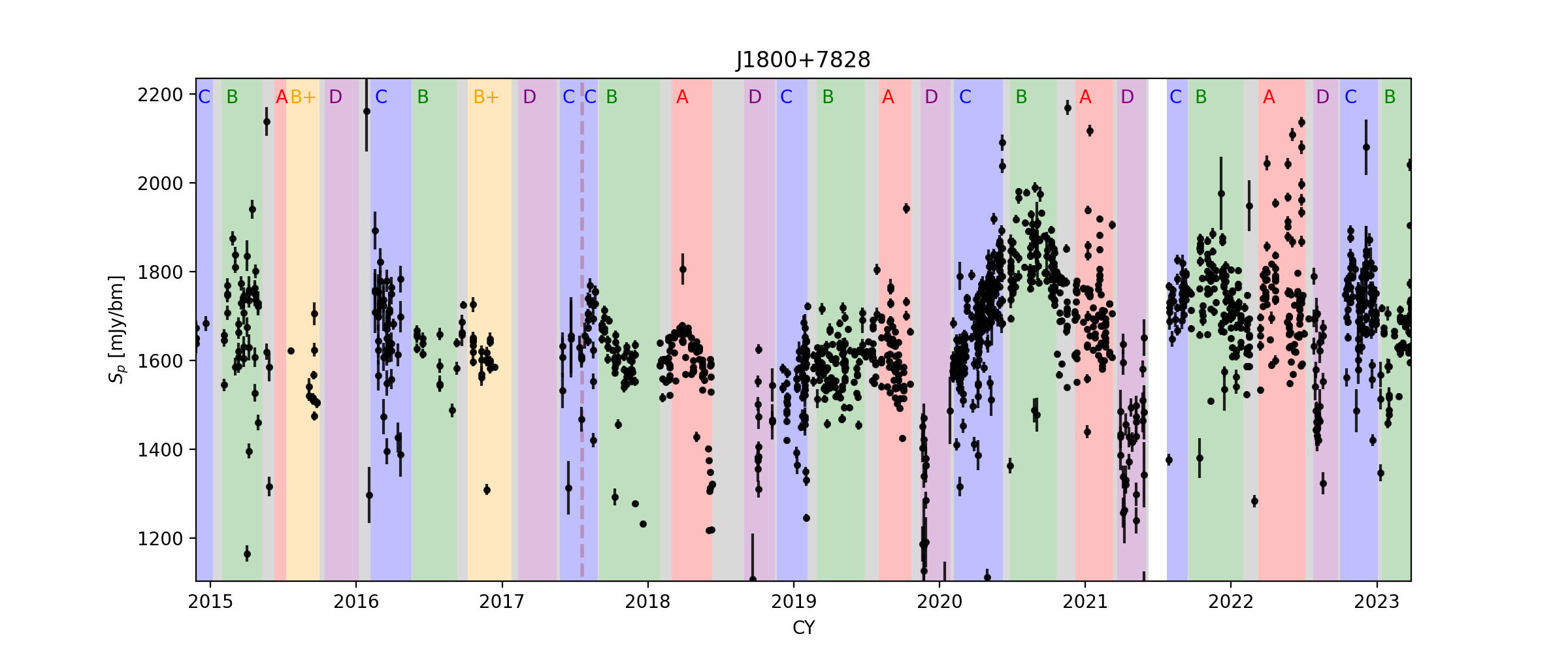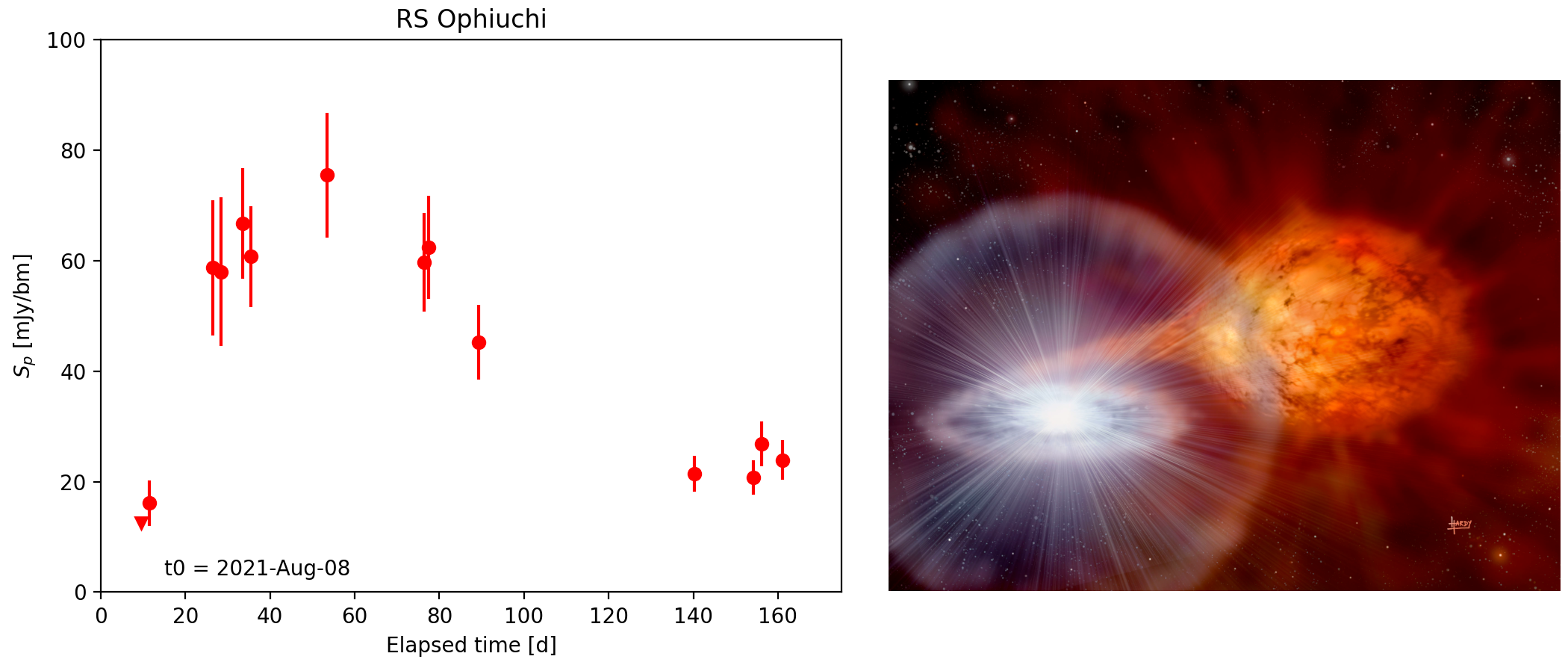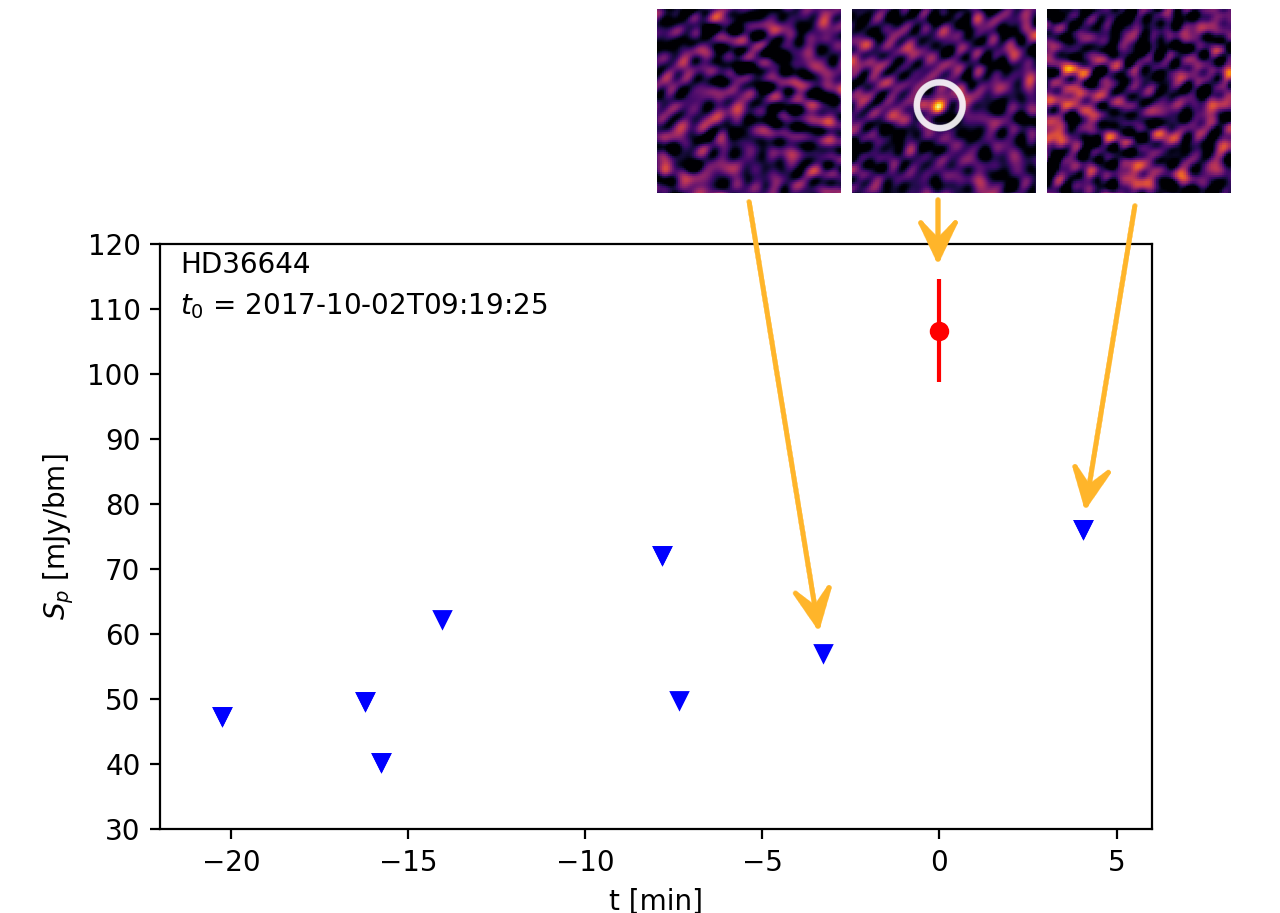
|
VLA Low-band Ionosphere and Transient Experiment (VLITE)Transients |

|
The transient radio sky at megahertz frequencies is a new frontier in radio science. By tapping the independent optical path of the prime focus receivers, VLITE images tens of thousands of square degrees over the course of a month with integration times varying from ten seconds to ten hours. VLITE's growing data archive already includes over 50,000 hours of data and 500,000 images with millions of radio emitters. Thus, VLITE provides a rich and unique resource capable of exploring transient and variable radio phenomena on minute to decade timescales over 80% of the sky.
VLITE images are processed with the VLITE Database Pipeline (VDP, Polisensky et al. 2019) that applies quality control, calculates the unique primary beam attenuation for each image and corrects the observed source fluxes. The Python Blob Detector and Source Finder (PyBDSF, Mohan & Rafferty 2015) is used to catalog sources with signal-to-noise ratios (SNR) greater than five. Sources in images that pass quality control are associated with previously detected sources and matched to catalogs with similar resolutions at other radio frequencies. Data products are stored in a structured query language (SQL) database to facilitate data access through queries. Typical VDP processing times are ~ 1 minute per image, enabling transient searches in the near real-time of the VLITE imaging pipeline.
VDP quantifies source light curves with metrics to identify transient candidates by their highly variable nature. Transients without light curves significantly sampled for metric calculations can be identified as sufficiently bright sources without matches in existing radio catalogs. Examples of VLITE light curves on several timescales are given below.



Modified on Friday, 02-Jun-2023 11:04:16 MDT
